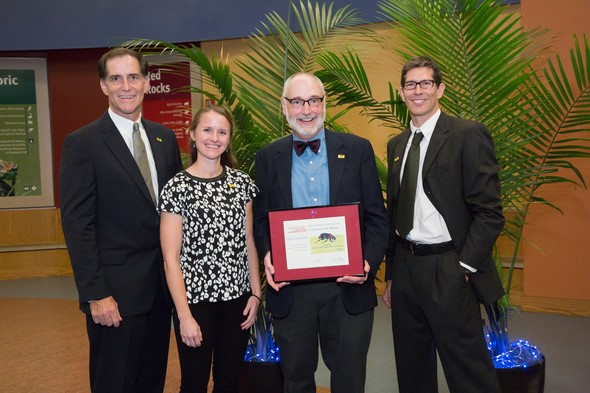
Xplor reconnects kids to nature and helps them find adventure in their own backyard. Free to residents of Missouri.


































Stay in Touch with MDC news, newsletters, events, and manage your subscription

Xplor reconnects kids to nature and helps them find adventure in their own backyard. Free to residents of Missouri.

A monthly publication about conservation in Missouri. Started in 1938, the printed magazine is free to residents of Missouri.


ST. LOUIS, Mo.—The American burying beetle recovery program, a partnership project between the Missouri Department of Conservation (MDC) and the St. Louis Zoo, among others, has achieved national recognition.
The program received the 2017 North American Conservation Significant Achievement Award this fall from the Association of Zoos and Aquariums (AZA). AZA is the non-profit, accrediting organization for the top zoos and aquariums in the U.S. and seven other countries. According to AZA, the annual award recognizes exceptional efforts toward regional habitat preservation, species restoration and support of biodiversity in the wild.
The American burying beetle is the largest of a class of carrion beetles and used to be found in 35 states, including Missouri. Now federally-endangered, their populations still exists precariously in less than seven states.
The recovery partnership, which includes the U.S. Fish and Wildlife Service (USFWS) and The Nature Conservancy (TNC), began in 2012. The St. Louis Zoo breeds the beetles at their Monsanto Insectarium from stock acquired in Arkansas. The beetles are re-introduced onto TNC’s Wah’Kon-Tah Prairie, located near El Dorado Springs in the southwest portion of Missouri. MDC St. Louis Regional Natural History Biologist Andrea Schuhmann is continuing an associated study to determine the success of the effort.
“Endangered species conservation and recovery can only be successful and sustainable through partnerships,” Schuhmann, who headed up MDC’s efforts in the project, said. “The American burying beetle project embodies this principle and I am thrilled to be working with so many passionate partners that have worked tirelessly for more than a decade to bring this beetle back to Missouri. What an honor it is to be a part of the team and to have this national recognition.”
“All the partners share in this recognition,” said Bob Merz, Director of the St. Louis Zoo’s Center for American Burying Beetle Conservation. “This is truly a project where every partner organization plays to their strengths by utilizing their unique expertise and resources. I’m thrilled that this cooperative approach is being recognized by our peers with such a prestigious award.”
The American burying beetle gets its name from the practice of burying dead animals, like small mammals and birds, which it eats. They can tunnel up to a foot underground, where they strip the carrion off fur and feathers using their pincers and secrete an anti-bacterial substance that slows down decomposition. The male and female burying beetles raise their young as a mated pair—a characteristic unusual in the insect world—and feed the carrion to them.
Schuhmann said she hopes that ultimately the restoration effort can produce and maintain a self-sustaining American burying beetle population in Missouri, possibly serving as a model for other states interested in bringing the beetles back to landscapes where they were formerly extirpated.
For more on the American burying beetle, go to https://nature.mdc.mo.gov/discover-nature/field-guide/american-burying-beetle.